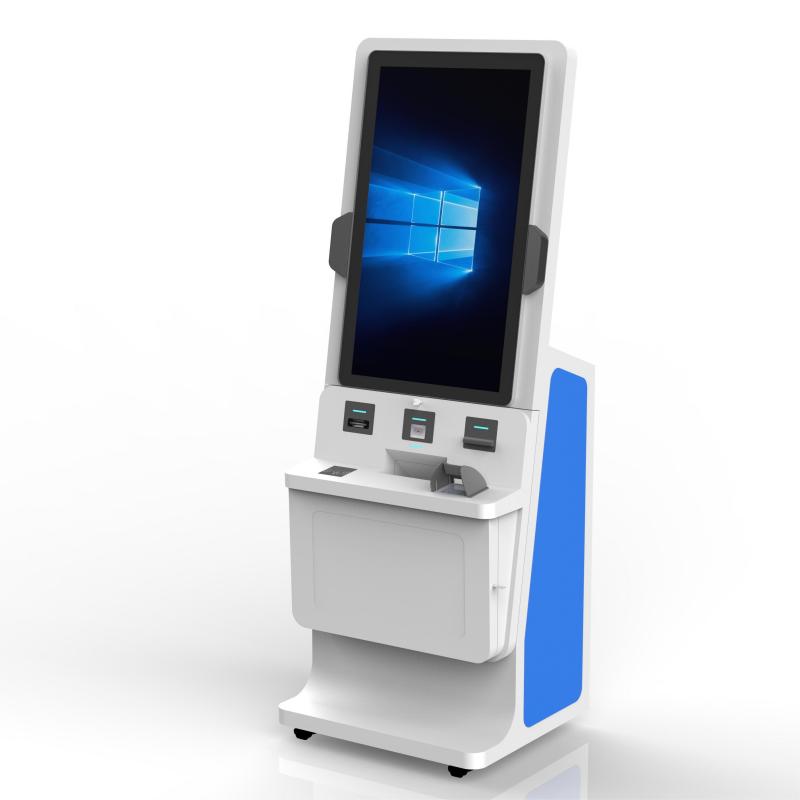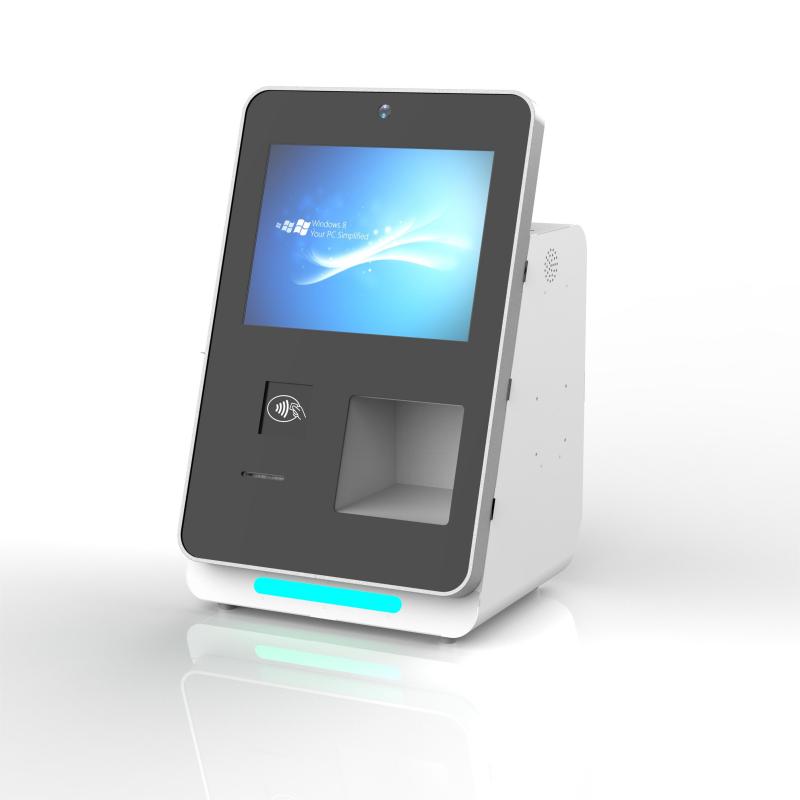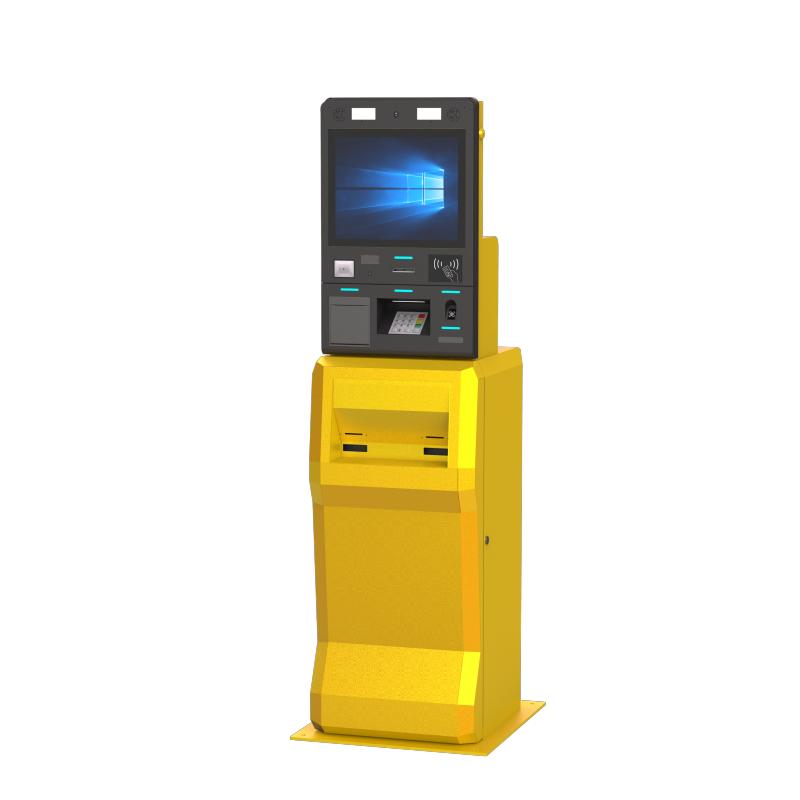
| Component | Description | Component | Description |
|---|---|---|---|
| Touchscreen Display | Main interface for user interaction; sizes range from 15 to 24 inches. | Processor | Powers the kiosk; typically Intel Core i3/i5/i7 or ARM-based processors. |
| ID Scanner | Scans IDs, passports, or QR codes for identification and check-in. | Printer | Thermal printer for printing visitor badges or receipts. |
| Camera | Captures photos of visitors, optional facial recognition. | Speakers/Microphone | Built-in for audio prompts and two-way communication if needed. |
| Card Reader | Reads RFID cards or other access control cards. | Software | Customizable visitor management software with data storage and reporting. |
| Networking | Connectivity options include Ethernet, Wi-Fi, and optional 4G/5G. | Power Supply | Standard 110-240V AC with optional battery backup. |
| Enclosure | Housing that protects internal components; available in various materials. | Mounting Options | Options include floor-standing, desktop, or wall-mounted configurations. |
| Thermal Printer | Prints visitor badges, passes, or other necessary documentation. | Lighting | LED lighting for screen illumination and visibility in low light. |
| Biometric Reader | Optional component for fingerprint or facial recognition for secure access. | Cooling System | Internal fans or passive cooling to maintain optimal operating temperature. |
| Accessibility Features | ADA-compliant options such as adjustable height, audio, and visual aids. | Security Features | Tamper-resistant enclosure, data encryption, and secure login access. |
A visitor check-in kiosk is crafted through a detailed process that combines design, engineering, and software development. The process begins with selecting the appropriate materials for the kiosk’s enclosure, often metal or acrylic, to ensure durability and a sleek appearance. The touchscreen display is integrated as the primary user interface, allowing visitors to interact smoothly. Inside, powerful processors like Intel Core or ARM are chosen to handle operations swiftly. Key hardware components, such as ID scanners, cameras, printers, and card readers, are meticulously installed to provide functionality like badge printing, ID verification, and photo capture.
The kiosk’s software is developed and customized to manage visitor data, integrate with existing systems, and provide a user-friendly interface. Connectivity options, including Ethernet, Wi-Fi, or 4G/5G, are incorporated to ensure seamless data transfer. Attention is given to accessibility, with features like adjustable height and ADA-compliant aids. Finally, security measures, including tamper-resistant enclosures, data encryption, and biometric authentication, are implemented to safeguard visitor information. Once assembled, the kiosk undergoes rigorous testing to ensure reliability and efficiency before being deployed in various settings.

Corporate Offices: Automates the visitor registration process, enhances security, and streamlines visitor management.
Healthcare Facilities: Facilitates patient and visitor check-ins, reducing wait times and ensuring accurate record-keeping.
Educational Institutions: Manages visitor access, tracks student pickups, and improves campus security.
Government Buildings: Controls visitor entry, maintains detailed records, and ensures compliance with security protocols.
Hotels and Event Venues: Simplifies guest check-ins, manages event attendee lists, and improves customer experience.
Manufacturing and Industrial Sites: Tracks contractor and visitor entry, ensuring compliance with safety regulations and site policies.
Retail Stores and Showrooms: Manages customer appointments, vendor visits, and improves in-store customer service and experience.

Enhanced Security: Automates visitor registration, ensuring accurate records and controlled access to the facility.
Time Savings: Speeds up the check-in process, reducing wait times for visitors and minimizing staff workload.
Improved Data Accuracy: Reduces manual errors by capturing visitor information directly from IDs or forms.
Real-Time Notifications: Instantly alerts hosts when their visitors arrive, improving communication and efficiency.
Professional Appearance: Creates a modern and organized first impression, reflecting positively on the organization.
Compliance and Reporting: Helps maintain accurate visitor logs for compliance with safety, legal, and regulatory requirements.
Scalability: Easily adapts to increased visitor volumes, making it suitable for businesses of all sizes.

| Kiosk Type | Typical Sizes | Price Range | Description |
|---|---|---|---|
| Desktop Kiosk | 15-19 inch display, 20"x15"x8" | $1,500 - $3,000 | Compact kiosk for limited spaces, ideal for small offices or reception areas. |
| Floor-Standing Kiosk | 19-24 inch display, 60"x24"x18" | $2,500 - $5,000 | Free-standing unit suitable for high-traffic areas, providing full functionality. |
| Wall-Mounted Kiosk | 15-22 inch display, 24"x18"x6" | $1,800 - $4,000 | Space-saving design mounted on walls, perfect for narrow corridors or lobbies. |
| Tablet Kiosk | 10-12 inch display, 15"x10"x5" | $500 - $1,500 | Portable and flexible, suitable for small spaces or mobile check-in stations. |
| Outdoor Kiosk | 19-27 inch display, 70"x30"x20" | $4,000 - $8,000 | Weatherproof kiosk designed for outdoor environments, with added durability. |
| Custom-Built Kiosk | Varies based on requirements | $5,000 - $10,000+ | Tailored to specific needs, with custom hardware, software, and design features. |
Assess Your Needs: Determine the volume of visitors, type of visitors, and specific requirements like badge printing, ID scanning, or photo capture.
Choose the Right Type: Select the kiosk type that best fits your space and usage. For high-traffic areas, a floor-standing or wall-mounted kiosk may be ideal, while desktop or tablet kiosks are better for smaller spaces.
Consider Customization: If you have specific branding, design, or functionality requirements, opt for a custom-built kiosk that can be tailored to meet your exact needs.
Evaluate Durability: For outdoor or industrial environments, choose a kiosk with robust construction and weatherproofing to withstand harsh conditions.
Check for Integration: Ensure the kiosk can integrate with your existing systems, such as visitor management software, access control, or security systems.
Budget Wisely: Compare prices across different vendors, keeping in mind the cost of any necessary customizations, software, and ongoing support.
Plan for Installation: Consider the installation requirements, including space, power supply, and network connectivity. Work with the vendor to ensure a smooth setup process.
Look for Support and Warranty: Choose a vendor that offers comprehensive support services, including training, maintenance, and a solid warranty to cover any potential issues.
Test Before Launch: Before full deployment, conduct a pilot test to ensure the kiosk meets all functional and operational requirements.
What did our happy clients say?
The visitor kiosk we purchased has greatly streamlined our check-in process. The setup was easy, and the interface is user-friendly. It has significantly improved our visitor management and security.
We love the sleek design of our new visitor kiosk. It fits perfectly in our lobby and enhances our company’s professional image. The real-time notifications are a game changer for our reception team.
The customization options were fantastic. We tailored the kiosk to match our brand, and it integrates seamlessly with our existing systems. Visitors appreciate the quick and efficient check-in.
Our visitor kiosk has been a valuable addition to our office. The automated badge printing and photo capture features have made our check-in process faster and more secure. Highly recommend!